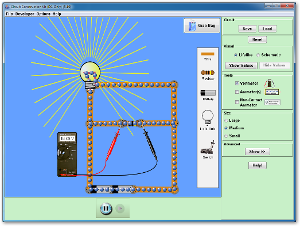This Week END
- STUDY PACKET! DO IT not a suggestion.
- OK Please Pages 87-94
- You can use the circuit simulator to test certain questions
- Whats the difference between hooking up a volt meter and an Amp meter?
- Do it on the simulator
- Upon Request Circuits Power Point Chapter 20
- Getting Started with Electronics
- In your notebook label a new page as circuits and the following days
- Day1
Objectives
After studying the material of this chapter, the student should be able to:
2. Define current, ampere, emf, voltage, resistance, resistivity, and temperature coefficient of resistance.
3. Write the symbols used for electromotive force, electric current, resistance, resistivity, temperature coefficient of resistance and power and state the unit associated with each quantity.- Use the simulator above:(must be done on a real computer not Phone)
- Build a circuit to make a bulb light with the fewest # of components (make observations)
- Sketch this in your notebook
- Sketch the circuit using both visual and schematic representations.
- What is current?
- What is resistance?
- What is voltage?
- Remove the light bulb and repeat the experiment.
- What is different? Why?
- Substitute a wire for the original light bulb
- What is different? Why?
- Sketch in your notebook & Complete the analogy below with electricity terms describe the purpose of each.
-
POST LAB BRIGHT IDEAS
